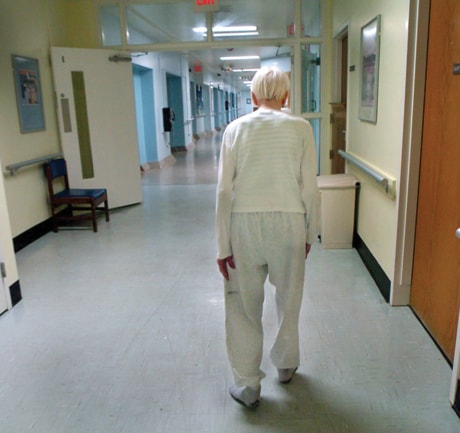SACRAMENTO, Calif. — When teenagers or younger adults take their own lives, the losses trigger society’s alarm bells. But it is older people, particularly men 65 and older, who have the highest rate of suicide of any age group.
Worried that the numbers could soar as baby boomers grow into old age, researchers, psychologists and others are working to share information and discuss prevention strategies.
“It’s the myth of the ’golden years,’ “ said Lisa Scott-Lee, a psychologist with Sacramento County’s division of mental health. “In today’s society, it is increasingly difficult to be elderly.”
During the past decade, statistics show, older people have consistently had the highest rate of suicide in the country.
In the U.S., the most recent figures are from 2005. That year, people age 65 and older made up about 12 per cent of the population but represented nearly 17 per cent of all suicides. The overall suicide rate in 2005 was about 11 per 100,000 people, compared with a rate of 14 per 100,000 among people 65 and older and 10 per 100,000 people among people 15 to 24 years old.
During the past three years, mental health specialists say, they suspect suicides among seniors have held steady or perhaps have increased. Although more people are surviving illnesses like cancer, many suffer from pain and other side effects that make them question whether life is worth living, they point out.
Seniors also are increasingly stressed by economic circumstances, and when savings accounts disappear in a banking crisis and stock market meltdown, stress, despair and depression only increases.
“This is a generation of people who were raised not to ask for help when they are in emotional pain,” said Marilyn Koenig, founder of Friends for Survival of Sacramento, part of a national outreach program for those who have lost someone to suicide.
“So this is their way out. But nobody wants their elderly parent or grandparent or spouse to die this way.”
Life expectancy in North America is higher than ever, rising to 78.1 years in 2006, according to the National Center for Health Statistics. But for too many elderly people, growing older translates into illness, isolation and depression.
“The question is, what is their quality of life as they get older and sicker?” asked psychologist Scott-Lee.
“Elders have incredible struggles. They have health problems. Financial difficulties. Personal losses and deaths of spouses. If they don’t seek help, they’re more likely to opt out.”
Older people attempt suicide less often than those in other age groups but are more often successful, according to one prominent researcher. Patrick Arbore, director and founder of the Center for Elderly Suicide Prevention in San Francisco.
These are acts of people who are beyond using suicide attempts as a misguided cry for help.
“Suicide attempts by an older person usually are genuine,” Arbore concludes in a presentation he will make in Sacramento this week. Remarks about “ending it all” should never be ignored, he says, even if they seem flippant.
In all age groups, including 65 and older, men are far more likely than women to commit suicide, and white men have the highest numbers of all.
They commit suicide at a rate four to five times that of white females.
“For men in particular, there is a real loss of identity when they grow older and stop working,” said Susan Lindeman, Arbore’s colleague at the San Francisco agency. Men are more reluctant to express vulnerability and fear, or reveal they are depressed.
“They get completely lost in our society,” said Lindeman.
Cynthia Hubert is a reporter for the Sacramento Bee.
